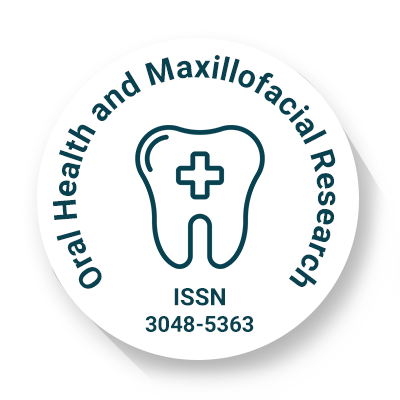
Oral Health and Maxillofacial Research
OPEN ACCESS
ISSN: 3048-5363

OPEN ACCESS
ISSN: 3048-5363

1Department of Oral Medicine & Radiology, Seema Dental College and Hospital, Rishikesh, Uttarakhand, India
2Department of Oral Medicine & Radiology, Institute of Dental Sciences, Uttar Pradesh, India
Cone beam computed tomography, or CBCT, is used extensively in dentistry these days. It provides thorough, precise, and accurate three-dimensional information on oral and maxillofacial structures in contrast to conventional two-dimensional approaches. An unintentional nding occurs when a hidden object is unexpectedly discovered during an imaging test that is unrelated to the test's indication. Understanding the incidence of these inadvertent maxillary sinus illnesses helps to improve diagnostic criteria and treatment planning, especially in the context of maxillofacial and dental healthcare. Aim: The purpose of the study was to use cone beam computed tomography to discover incidental ndings of maxillary sinus pathologies. Material and Method: This retrospective study employed 150 Cone Beam Computed Tomography images to assess incidental ndings within the maxillary sinus. Digital imaging and transmission in a medical format were used to create the CBCT images. Every coronal, sagittal and axial examination was performed. Anatomical position and clinical relevance were used to record and classify incidental observations. Results: It is essential to assess the scans outside of the region of interest, and noteworthy accidental results ought to be reported. The most frequent incidental nding among the 150 CBCT scans was sinus septation (55.7%), which was followed by mucosal thickening (25.3%), mucous retention cyst (7.4%), complete or partial sinus opaci cation (4.1%), cystic lesion (2%), maxillary wall discontinuation (1.3%), bro-osseous lesion, and benign orthodontic tumour (0.7%). Conclusion: A thorough assessment of the scans outside of the region of interest is required, and important accidental results to be shared. In order to take precautions and avoid di culties after surgery, CBCT is advised for a thorough assessment of the toothless area in three plans before sinus surgeries, particularly sinus lifts.
1Department of Oral Medicine & Radiology, Seema Dental College and Hospital, Rishikesh, Uttarakhand, India
2Department of Oral Medicine & Radiology, Institute of Dental Sciences, Uttar Pradesh, India